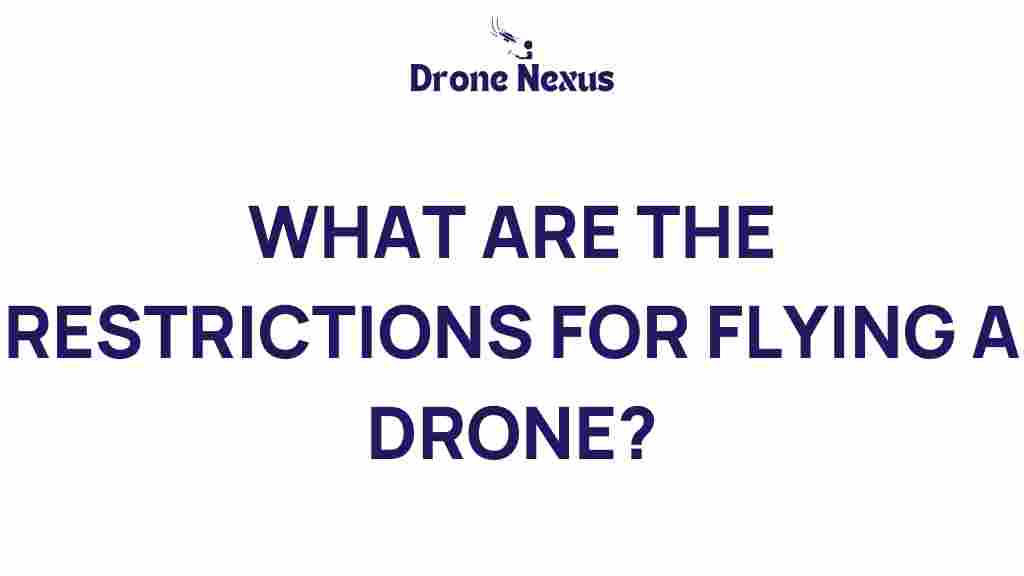Drone Regulations: Understanding the Restrictions for Flying a Drone
As the popularity of drones continues to soar, understanding the drone regulations that govern their use has become increasingly essential for both hobbyists and professionals alike. Whether you’re a seasoned pilot or just starting in the world of unmanned aerial vehicles (UAVs), knowing the rules can help you avoid legal pitfalls and ensure safe flying. In this comprehensive guide, we will explore the key aspects of drone regulations, the steps to comply with them, and troubleshooting tips to keep your flights trouble-free.
The Importance of Understanding Drone Regulations
Drone regulations exist for several reasons:
- Safety: Ensuring that drones do not interfere with manned aircraft and that they are flown in a manner that protects people on the ground.
- Privacy: Addressing concerns about surveillance and the unwarranted recording of individuals without their consent.
- Environmental Protection: Preventing drones from disrupting wildlife and natural habitats.
By adhering to these regulations, you not only protect yourself from potential fines and legal actions but also contribute to a safer flying environment for everyone.
Key Drone Regulations to Know
Understanding the various drone regulations is crucial for responsible flying. Here are the key areas you need to be aware of:
1. Registration Requirements
In many countries, including the United States, drones above a specific weight must be registered with the relevant aviation authority. For instance, in the U.S., the Federal Aviation Administration (FAA) requires registration for drones weighing over 0.55 pounds (250 grams).
- How to Register: Visit the official FAA website to complete the registration process online.
- Cost: Registration typically incurs a fee, which varies by country.
2. Flying Altitude Restrictions
Most regulations specify maximum altitude limits for drone flights. In the U.S., for example, the FAA limits recreational drone pilots to a maximum altitude of 400 feet above ground level. This restriction helps prevent collisions with manned aircraft.
3. No-Fly Zones
Flying in certain areas is strictly prohibited, including:
- Near airports and heliports
- Over crowds or public events
- Near military bases
- In national parks
Always consult local regulations and airspace maps to ensure compliance with no-fly zones.
4. Visual Line of Sight (VLOS)
Most regulations require that drone pilots maintain visual line of sight with their aircraft at all times. This means you should be able to see your drone without the aid of binoculars or other devices. Using first-person view (FPV) goggles is generally not permitted unless you have a visual observer with you.
5. Remote Pilot Certification
For commercial drone operations, obtaining a remote pilot certification is often required. This involves passing a knowledge test that covers the relevant regulations, airspace classification, weather, and more.
- Certification Process: Study for the FAA Part 107 test and schedule your exam through a designated testing center.
- Renewal: Keep in mind that certifications typically need to be renewed every two years.
6. Insurance Requirements
While not always mandatory, obtaining liability insurance for drone operations is highly recommended, especially for commercial use. This protects you financially in case of accidents or damage caused by your drone.
Step-by-Step Guide to Compliance with Drone Regulations
Now that we’ve discussed the essential drone regulations, let’s break down a step-by-step process to ensure compliance:
Step 1: Register Your Drone
If your drone weighs over the registration threshold, visit the appropriate aviation authority’s website to register. Ensure you have your drone’s make, model, and serial number on hand.
Step 2: Learn the Local Regulations
Research and understand the local regulations governing drone use in your area. This information can often be found on government websites or through local flying clubs.
Step 3: Plan Your Flight
Before each flight, plan your route carefully. Check for nearby no-fly zones and ensure you are flying in compliance with altitude restrictions. Use apps like AirMap or UAV Forecast to assist in your planning.
Step 4: Maintain Visual Line of Sight
During your flight, always keep your drone within your line of sight. This is crucial for adherence to VLOS regulations and helps prevent accidents.
Step 5: Respect Privacy
Be mindful of privacy concerns while flying. Avoid capturing images or videos of individuals without their permission, especially in residential areas.
Step 6: Stay Updated
Drone regulations can change frequently. Stay informed about updates by subscribing to newsletters from your aviation authority or joining drone pilot communities.
Troubleshooting Tips for Drone Pilots
Even seasoned drone pilots can face challenges. Here are some troubleshooting tips to help you navigate common issues:
1. GPS Signal Loss
If you lose GPS signal during your flight:
- Return to a location with a clear view of the sky.
- Consider using the “Return to Home” feature if your drone has it.
2. Low Battery Issues
Monitor your drone’s battery level closely. If it starts to get low:
- Always plan to return your drone well before the battery runs out.
- Identify safe landing spots in advance.
3. Interference from Other Signals
If you experience interference:
- Move away from buildings or areas with a lot of electronic equipment.
- Change flight locations if interference persists.
Conclusion
Navigating the skies with a drone can be an exhilarating experience, but it comes with the responsibility of adhering to drone regulations. By understanding the requirements for registration, altitude, no-fly zones, and more, you can ensure a safe and enjoyable flying experience. Always stay informed about local laws and best practices, and remember to respect the privacy of others while you explore the skies. With the right knowledge and preparation, you can elevate your drone piloting to new heights!
For more information about drone regulations, visit the FAA website or consult your local aviation authority.
This article is in the category Safety and created by DroneNexus Team
